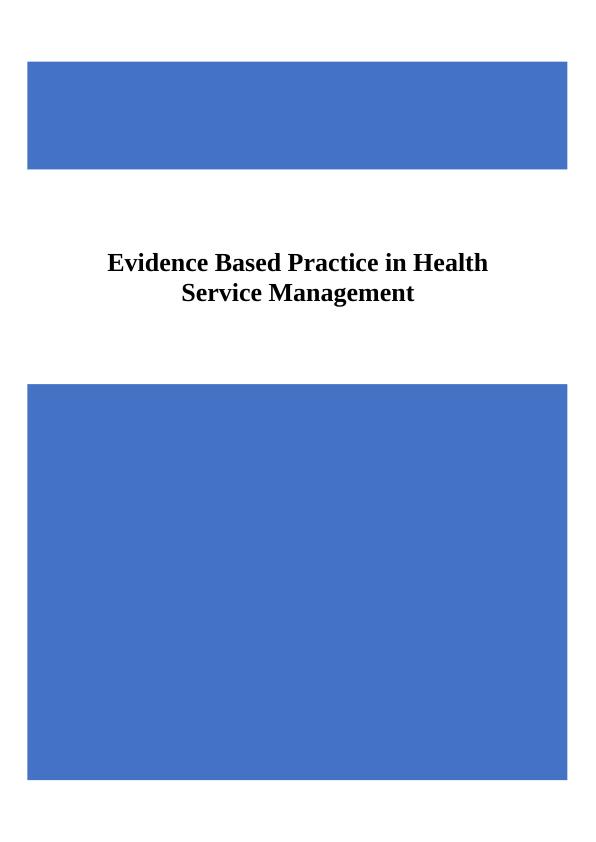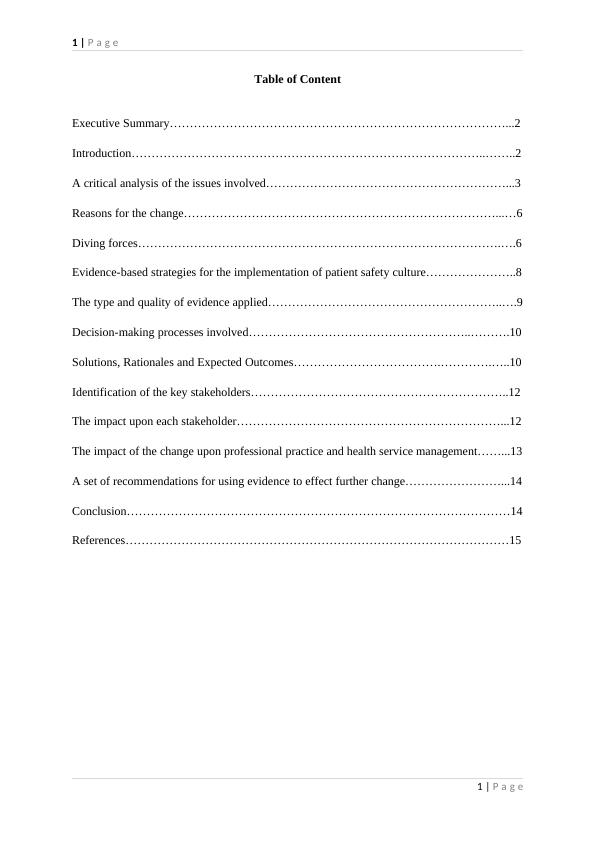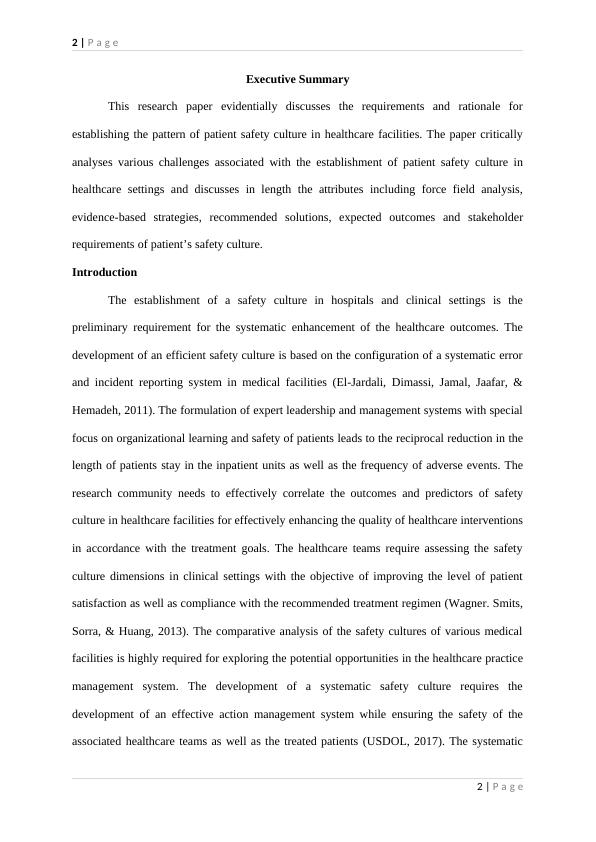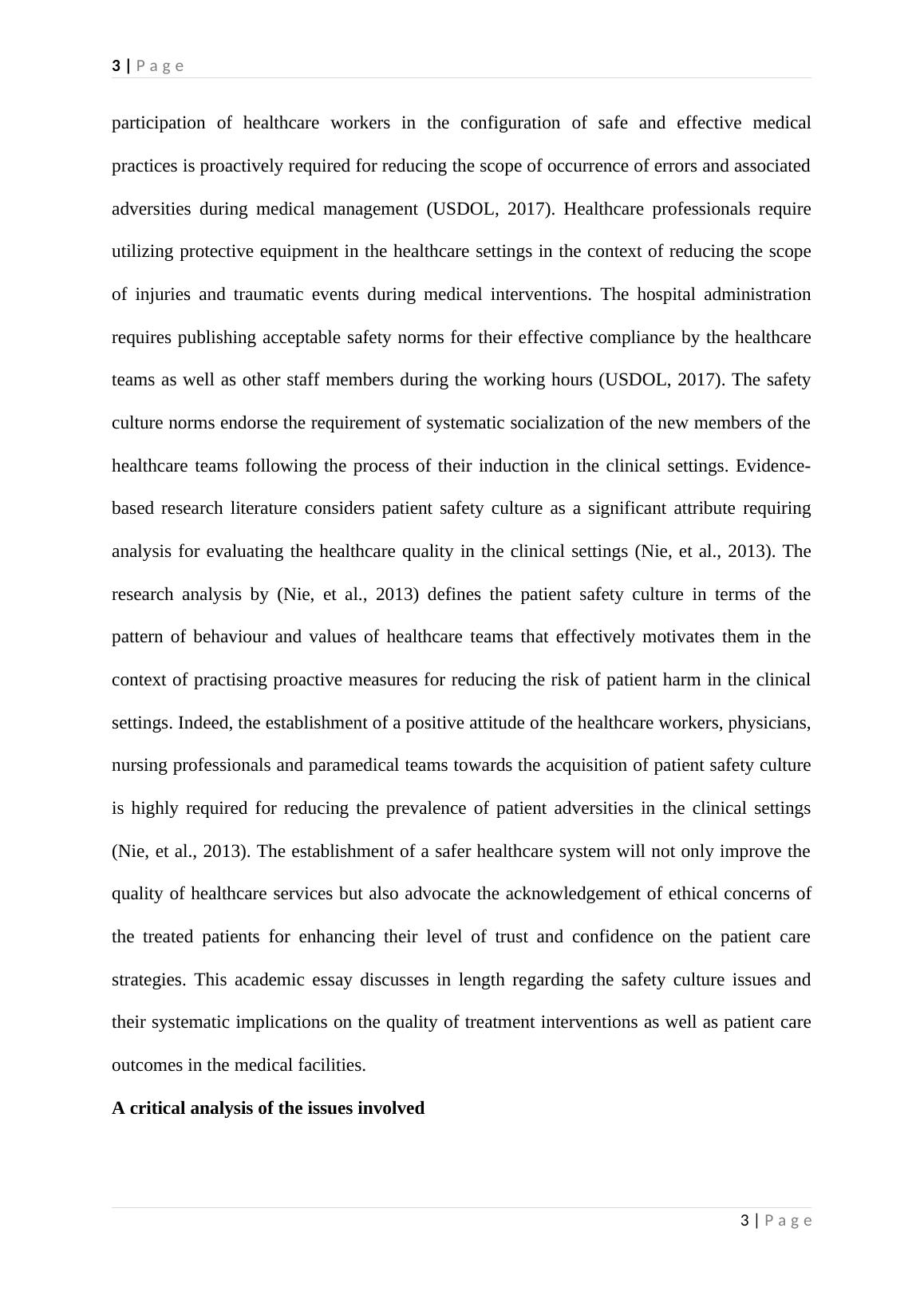Evidence Based Practice in Health Service Management
Added on 2020-04-01
20 Pages5722 Words375 Views
Evidence Based Practice in Health Service Management

1 | P a g eTable of ContentExecutive Summary.......................................................................................2Introduction.................................................................................................2A critical analysis of the issues involved...............................................................3Reasons for the change....................................................................................6Diving forces...............................................................................................6Evidence-based strategies for the implementation of patient safety culture.......................8The type and quality of evidence applied...............................................................9Decision-making processes involved..................................................................10Solutions, Rationales and Expected Outcomes.......................................................10Identification of the key stakeholders.................................................................12The impact upon each stakeholder.....................................................................12The impact of the change upon professional practice and health service management.........13A set of recommendations for using evidence to effect further change...........................14Conclusion................................................................................................14References................................................................................................151 | P a g e

2 | P a g eExecutive SummaryThis research paper evidentially discusses the requirements and rationale forestablishing the pattern of patient safety culture in healthcare facilities. The paper criticallyanalyses various challenges associated with the establishment of patient safety culture inhealthcare settings and discusses in length the attributes including force field analysis,evidence-based strategies, recommended solutions, expected outcomes and stakeholderrequirements of patient’s safety culture.IntroductionThe establishment of a safety culture in hospitals and clinical settings is thepreliminary requirement for the systematic enhancement of the healthcare outcomes. Thedevelopment of an efficient safety culture is based on the configuration of a systematic errorand incident reporting system in medical facilities (El-Jardali, Dimassi, Jamal, Jaafar, &Hemadeh, 2011). The formulation of expert leadership and management systems with specialfocus on organizational learning and safety of patients leads to the reciprocal reduction in thelength of patients stay in the inpatient units as well as the frequency of adverse events. Theresearch community needs to effectively correlate the outcomes and predictors of safetyculture in healthcare facilities for effectively enhancing the quality of healthcare interventionsin accordance with the treatment goals. The healthcare teams require assessing the safetyculture dimensions in clinical settings with the objective of improving the level of patientsatisfaction as well as compliance with the recommended treatment regimen (Wagner. Smits,Sorra, & Huang, 2013). The comparative analysis of the safety cultures of various medicalfacilities is highly required for exploring the potential opportunities in the healthcare practicemanagement system. The development of a systematic safety culture requires thedevelopment of an effective action management system while ensuring the safety of theassociated healthcare teams as well as the treated patients (USDOL, 2017). The systematic2 | P a g e

3 | P a g eparticipation of healthcare workers in the configuration of safe and effective medicalpractices is proactively required for reducing the scope of occurrence of errors and associatedadversities during medical management (USDOL, 2017). Healthcare professionals requireutilizing protective equipment in the healthcare settings in the context of reducing the scopeof injuries and traumatic events during medical interventions. The hospital administrationrequires publishing acceptable safety norms for their effective compliance by the healthcareteams as well as other staff members during the working hours (USDOL, 2017). The safetyculture norms endorse the requirement of systematic socialization of the new members of thehealthcare teams following the process of their induction in the clinical settings. Evidence-based research literature considers patient safety culture as a significant attribute requiringanalysis for evaluating the healthcare quality in the clinical settings (Nie, et al., 2013). Theresearch analysis by (Nie, et al., 2013) defines the patient safety culture in terms of thepattern of behaviour and values of healthcare teams that effectively motivates them in thecontext of practising proactive measures for reducing the risk of patient harm in the clinicalsettings. Indeed, the establishment of a positive attitude of the healthcare workers, physicians,nursing professionals and paramedical teams towards the acquisition of patient safety cultureis highly required for reducing the prevalence of patient adversities in the clinical settings(Nie, et al., 2013). The establishment of a safer healthcare system will not only improve thequality of healthcare services but also advocate the acknowledgement of ethical concerns ofthe treated patients for enhancing their level of trust and confidence on the patient carestrategies. This academic essay discusses in length regarding the safety culture issues andtheir systematic implications on the quality of treatment interventions as well as patient careoutcomes in the medical facilities. A critical analysis of the issues involved3 | P a g e

End of preview
Want to access all the pages? Upload your documents or become a member.
Related Documents
Quality Practice Environments and Patient Safety Issueslg...
|9
|3020
|462
Patient Centered Approach And Patient Safetylg...
|3
|454
|21
(PDF) Clinical leadership: values, beliefs and visionlg...
|8
|2241
|51
Quality and safety improvement in mediation errors while administration by Nurselg...
|10
|3101
|40
HNN320 Leadership and Clinical Governancelg...
|15
|4063
|31
THE EFFECTIVE CLINICAL GOVERNANCElg...
|6
|1495
|29
